After the first half of the match and a score of 4–2 in the favor of GM Ju Wenjun — the four-time defending FIDE Women’s World Champion — the players had two days off to travel to the new host city for the second half of the match. After starting in Ju’s home of Shanghai, the match moved roughly 1,000 miles to GM Tan Zhongyi’s home of Chongqing.

The players may have had two days “off,” but we all know how flights can affect one's habits. While many think being home could play an important role in feeling comfortable and maybe regaining confidence, others may feel even more pressure playing on their home turf.
With the stage set, let’s turn to our key takeaways from games 7 and 8, where Ju’s large lead grew larger. We’ll look at each game one at a time, as the lessons from the opening phase bleed into the lessons from the later phases.
Game 7
In game 7, Tan brought a new opening idea in game 7, as she played 2. ... Nc6 and allowed White to opt for the Rossolimo with 3. Bb5. The players seemed to be following recent high-profile games up until the following moment after 13. ... Bxd6.
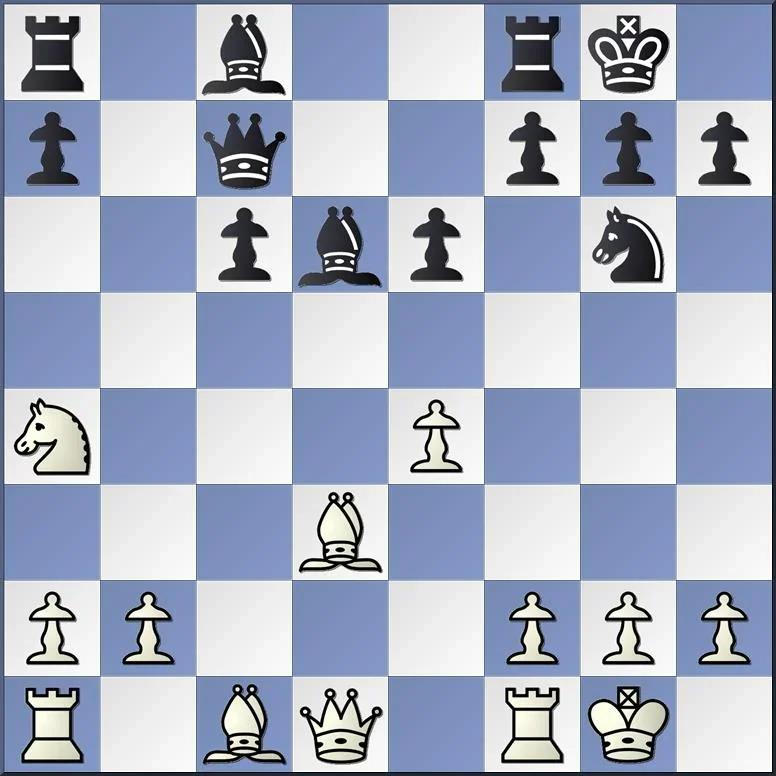
Here, Ju played 14. Qh5, which seemed like an interesting idea at the time, but it proved unhelpful as the pressure on h2 remained. Soon after, Tan was able to win the h2-pawn. Instead, 14. g3 was essayed by Caruana, and it is known to lead to a playable position.
After Ju’s choice, a more unconventional position arose. What would you play for Black here?
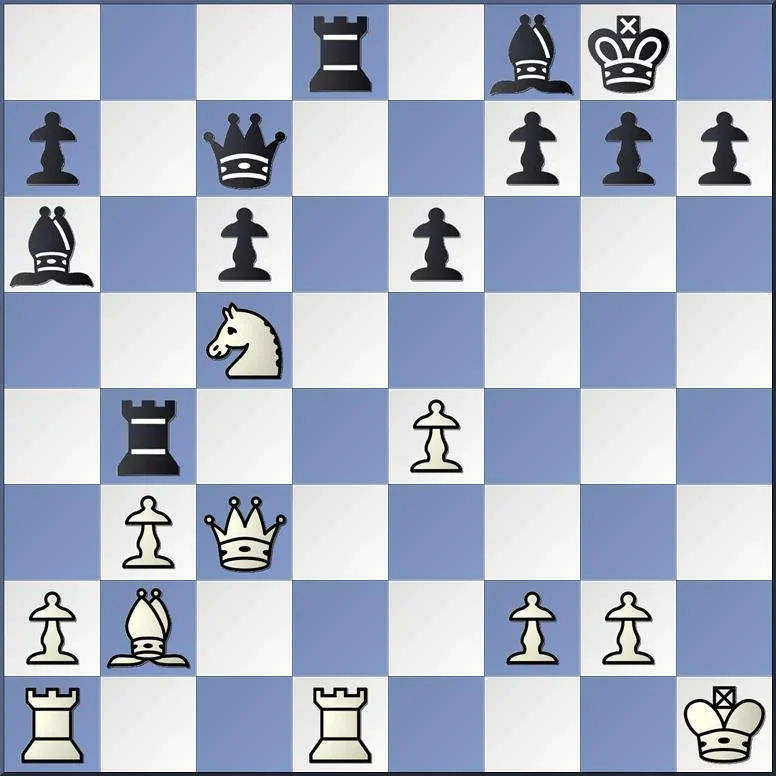
In this position, reached after 23. Nc5, Tan chose to retreat with 23. ... Rb6, instead of the more aggressive 23. ... Be2.
This more active option would have also helped maintain her rook’s position while preparing some ideas to attack White's king with … Qc7-e7-h4. Plus, after 24. Rxd8 Qxd8, White could not play 25. Qxb4?? (see following diagram). Can you see why?
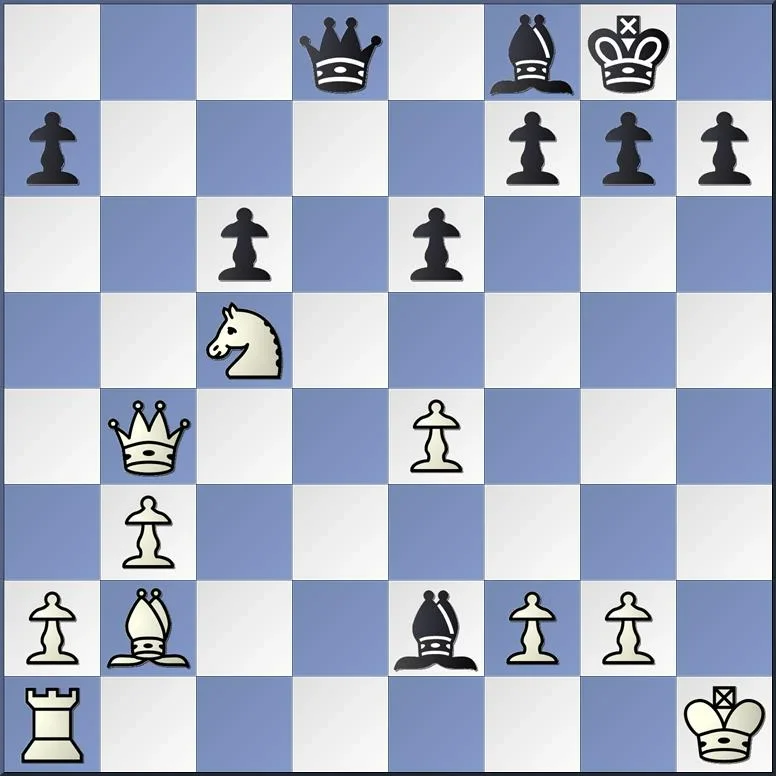
25. Qxb4?? fails due to 25. ... Qh4+ 26. Kg1 Bd6 and, with the e-pawn pinned, only 27. g3 is possible, but that allows the typical 27. ... Bxg3 with mate to follow. White's best move would be 25. Kg1, but this would be the kind of position where Black could try to push and create chances.

Later in game 7, despite being down a pawn, Ju maintained the pressure and more active pieces. It is in the following position that Tan lost objectivity and tried to hold onto the c-pawn instead of letting it go.
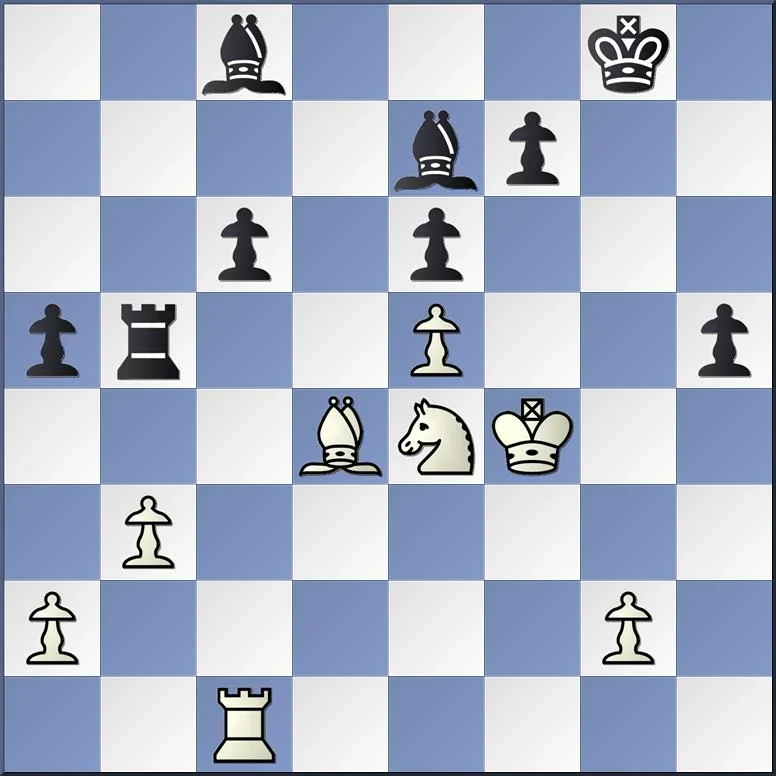
After 35. Kxf4, Black could have continued with 35. ... Kg7. This would have allowed 36. Rxc6, but that gives Black the opportunity to free up the light-squared bishop, which has been restricted ever since she chose not to play 23. … Be2.
Instead, Tan played 35. ... Bb7, which allowed the dominant 36. Bc5 trading Black's good bishop first followed by 37. Nxc5 and a dominant good-knight-and-rook-versus-bad-bishop-and-rook endgame. From there it was just a matter of time until Ju was able to win most of Black's pawns.
You can catch up with my annotations and follow through with the game from here on, though unfortunately for Tan, there wasn’t much counterplay she could have tried to get.
Takeaway: With the lead in the match, Ju’s decision to go “off script” relatively early in the game was bold, and it did not necessarily work in her favor. But while following theory might have been the safer choice, she did get chances to outplay her opponent in the unconventional position that arose. This occurred when Tan failed to keep her pieces active, perhaps over-estimating the value of her extra pawn.
Game 8
Game 8 brought a new opening for Tan as she chose to start with 1. e4 as opposed to the English. Considering the score of the match, the opening choice seemed designed to lead to a more aggressive game. However after 1. ... e5 she responded with 2. Nc3, very likely to avoid the Petrov, which is one of Ju's main weapons.
It is unclear to me if Tan was planning to go for a delayed Vienna with an eventual f2-f4, but the position resulting from the opening barely left Tan with any advantage. Ju calmly played 4. ... Bb4 and after a few more trades White's advantage was gone.
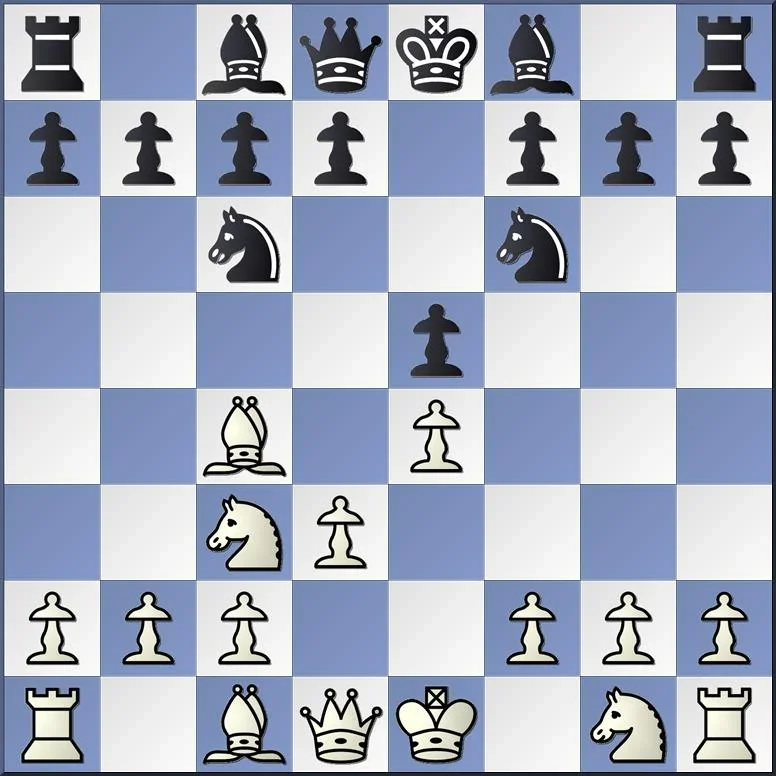
It is in the following position that maybe Tan could have tried finding some chances to press on the kingside after closing down the position with d4-d5, but Tan tried a positional approach, instead, bringing her knight to the queenside instead of the kingside.
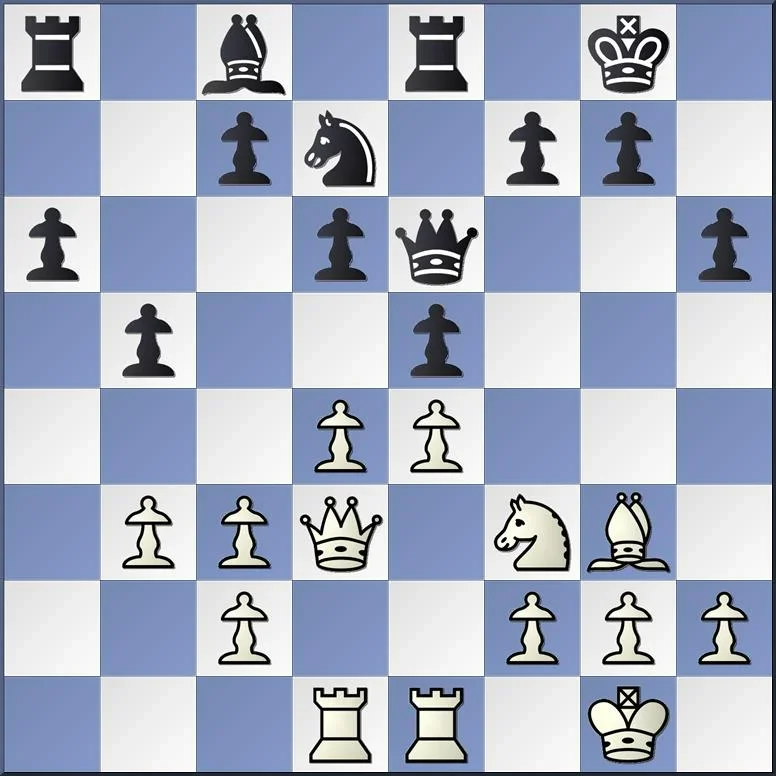
This approach proved a bit too slow, as Ju seemed confident in her plans to support the … f7-f5 push, which she was able to make it work in good circumstances. What would you play in the below position with White: 25. Qd4 or 25. exf5? Considering that a pawn may be lost either way, would you give up the e4-pawn or the c2-pawn?
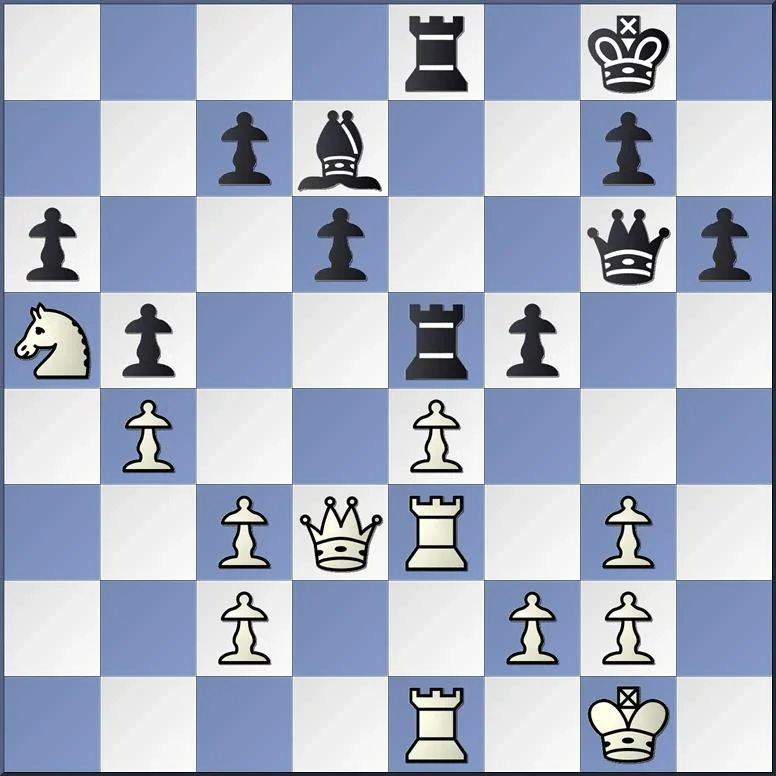
In the above diagram, 25. exf5 had to be played. After 25. ... Bxf5 26. Qd2 Rxe3 27. Rxe3 Rxe3 28. Qxe3 Bxc2 29. Qa7, White has some activity.
Instead, the game reached the following position. Can you find a beautiful way for Black to take the advantage?
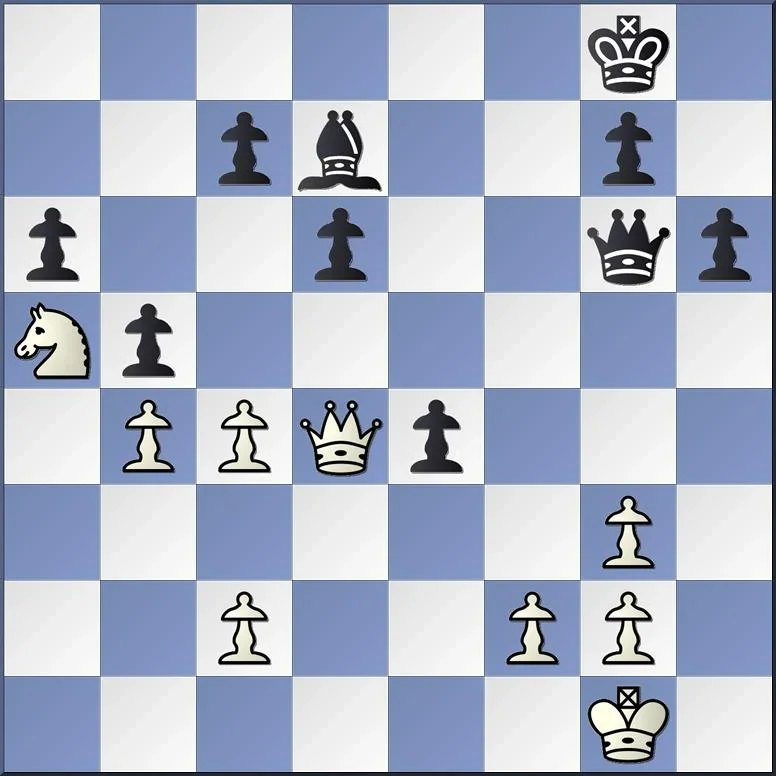
Tan found 28. … e3!, which solidified her advantage, as I discuss more in my annotations.
Takeaways: Black seemed perfectly prepared for White’s unconventional way of playing an open game after 2. Nc3, neutralizing White’s chances as early as move four. The match pressure made it harder for Tan to keep her objectivity, as well, seeing her eschew lines that might have equalized to seek aggressive chances that were not at all justified from her position on the board.

Despite having a great start and showing, in my opinion, much better opening preparation, Tan has not been able to deliver in the latter part of several games. Finishing the first part of the match in Shanghai, trailing by two points must have put more pressure on Tan than she let the fans see in the post-game interviews. Once the match moved to Chongqing, I thought that being at home would help her find calmness and regain her confidence.
Instead, the need to win at all costs has proved fatal as she lost the first two games after the break. Now after eight games are in the books, the match is 6–2 for the defending champion, GM Ju Wenjun.
While Ju seems to have been out-prepared in the opening part, her combative style has helped her find creative ideas to surprise her opponent and pace herself to win game after game. Losing four games in a row must be difficult, but winning four in a row could also make one feel that the hardest work is behind her, making it tempting to go on “cruise control.”
What will the players bring in round 9? Will we see a winner in Ju, or will Tan give it all to stay in the match?
Read my annotations from games 7 and 8 in full below, and keep an eye out for my recap video from the first six games.
Categories
Archives
- January 2026 (4)
- December 2025 (27)
- November 2025 (29)
- October 2025 (39)
- September 2025 (27)
- August 2025 (29)
- July 2025 (43)
- June 2025 (25)
- May 2025 (24)
- April 2025 (29)
- March 2025 (29)
- February 2025 (20)
- January 2025 (24)
- December 2024 (34)
- November 2024 (18)
- October 2024 (35)
- September 2024 (23)
- August 2024 (27)
- July 2024 (44)
- June 2024 (27)
- May 2024 (31)
- April 2024 (51)
- March 2024 (34)
- February 2024 (25)
- January 2024 (26)
- December 2023 (29)
- November 2023 (26)
- October 2023 (37)
- September 2023 (27)
- August 2023 (37)
- July 2023 (47)
- June 2023 (33)
- May 2023 (37)
- April 2023 (45)
- March 2023 (37)
- February 2023 (28)
- January 2023 (31)
- December 2022 (23)
- November 2022 (32)
- October 2022 (31)
- September 2022 (19)
- August 2022 (39)
- July 2022 (32)
- June 2022 (35)
- May 2022 (21)
- April 2022 (31)
- March 2022 (33)
- February 2022 (21)
- January 2022 (27)
- December 2021 (36)
- November 2021 (34)
- October 2021 (25)
- September 2021 (25)
- August 2021 (41)
- July 2021 (36)
- June 2021 (29)
- May 2021 (29)
- April 2021 (31)
- March 2021 (33)
- February 2021 (28)
- January 2021 (29)
- December 2020 (38)
- November 2020 (40)
- October 2020 (41)
- September 2020 (35)
- August 2020 (38)
- July 2020 (36)
- June 2020 (46)
- May 2020 (42)
- April 2020 (37)
- March 2020 (60)
- February 2020 (38)
- January 2020 (45)
- December 2019 (34)
- November 2019 (35)
- October 2019 (42)
- September 2019 (45)
- August 2019 (56)
- July 2019 (44)
- June 2019 (35)
- May 2019 (40)
- April 2019 (48)
- March 2019 (61)
- February 2019 (39)
- January 2019 (30)
- December 2018 (29)
- November 2018 (51)
- October 2018 (45)
- September 2018 (29)
- August 2018 (49)
- July 2018 (35)
- June 2018 (31)
- May 2018 (39)
- April 2018 (31)
- March 2018 (26)
- February 2018 (33)
- January 2018 (30)
- December 2017 (26)
- November 2017 (24)
- October 2017 (30)
- September 2017 (30)
- August 2017 (31)
- July 2017 (28)
- June 2017 (32)
- May 2017 (26)
- April 2017 (37)
- March 2017 (28)
- February 2017 (30)
- January 2017 (27)
- December 2016 (29)
- November 2016 (24)
- October 2016 (32)
- September 2016 (31)
- August 2016 (27)
- July 2016 (24)
- June 2016 (26)
- May 2016 (19)
- April 2016 (30)
- March 2016 (36)
- February 2016 (28)
- January 2016 (32)
- December 2015 (26)
- November 2015 (23)
- October 2015 (16)
- September 2015 (28)
- August 2015 (28)
- July 2015 (6)
- June 2015 (1)
- May 2015 (2)
- April 2015 (1)
- February 2015 (3)
- January 2015 (1)
- December 2014 (1)
- July 2010 (1)
- October 1991 (1)
- August 1989 (1)
- January 1988 (1)
- December 1983 (1)







